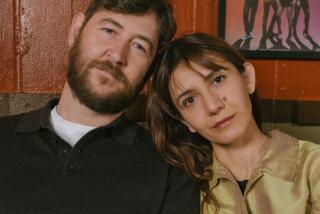Back to ‘Brideshead’
- Share via
To many contemporary viewers, “Brideshead Revisited” means not just Evelyn Waugh’s original novel but also memories of the celebrated 1980s television miniseries starring Jeremy Irons. It was quite the event in its day, and the makers of this new feature film adaptation in essence have not just one but two source texts they are fated to be held up against.
This latest version has been directed by Julian Jarrold from a screenplay by Andrew Davies and Jeremy Brock, and it says much about what a bind the filmmakers were in that they chose to use the same manor as the miniseries did to represent the grand estate where many of the key events in the film take place.
No matter how much they try to differentiate their take on the material, there are certain things they can never get away from.
“Brideshead Revisited,” for those who need the refresher course, takes place during that doomed romantic period between the world wars and concerns a young Englishman of modest means and social standing, Charles Ryder (Matthew Goode). After he falls in with Sebastian and Julia Flyte (Ben Whishaw and Hayley Atwell), brother and sister from an aristocratic family who live on a palatial estate called Brideshead, Charles is swept into a world that bedazzles, beguiles and bedevils him.
The film’s strengths are in Waugh’s story and not so much in the particular spin of these filmmakers. Their decision to turn up the volume on the homosexual undertones between Sebastian and Charles feels like an unimaginative nod to our modern times.
They also reconfigure Charles as more overtly opportunist and less simply lost (Tom Ripley he is not). The film more cleanly depicts Charles’ ambitions, the ways in which he throws himself against the barriers that strict, class-bound society wants to place before him. He may get to visit the patrician splendor of Brideshead and even feel somewhat at home, but he will never truly belong there.
The novel’s overarching theme regarding Catholicism and the way faith itself becomes a final boundary Charles struggles to cross is more problematic. Though religion is touched on throughout the film, the way in which the filmmakers largely save it for the final sections renders it a forced fit.
Upscale pictures of class and heritage are something of a rite of passage for British filmmakers. Jarrold’s previous film was “Becoming Jane,” a faux-heritage film that attempted to turn the story of Jane Austen’s life into an Austen-esque tale. In “Brides- head,” Jarrold seems too often to consciously be making an in-quotation-marks classy picture, much like last year’s “Atonement,” in which the costumes and setting are just so, but the human drama gets lost amid the pictorial pleasantries.
That the film is neither a true triumph nor a total disaster makes it somewhat difficult to justify revisiting “Brideshead,” apart from the hope it will inspire someone somewhere to pick up the book.
--
“Brideshead Revisited.” MPAA rating: PG-13 for some sexual content. Running time: 2 hours. In selected theaters.
More to Read
Only good movies
Get the Indie Focus newsletter, Mark Olsen's weekly guide to the world of cinema.
You may occasionally receive promotional content from the Los Angeles Times.











